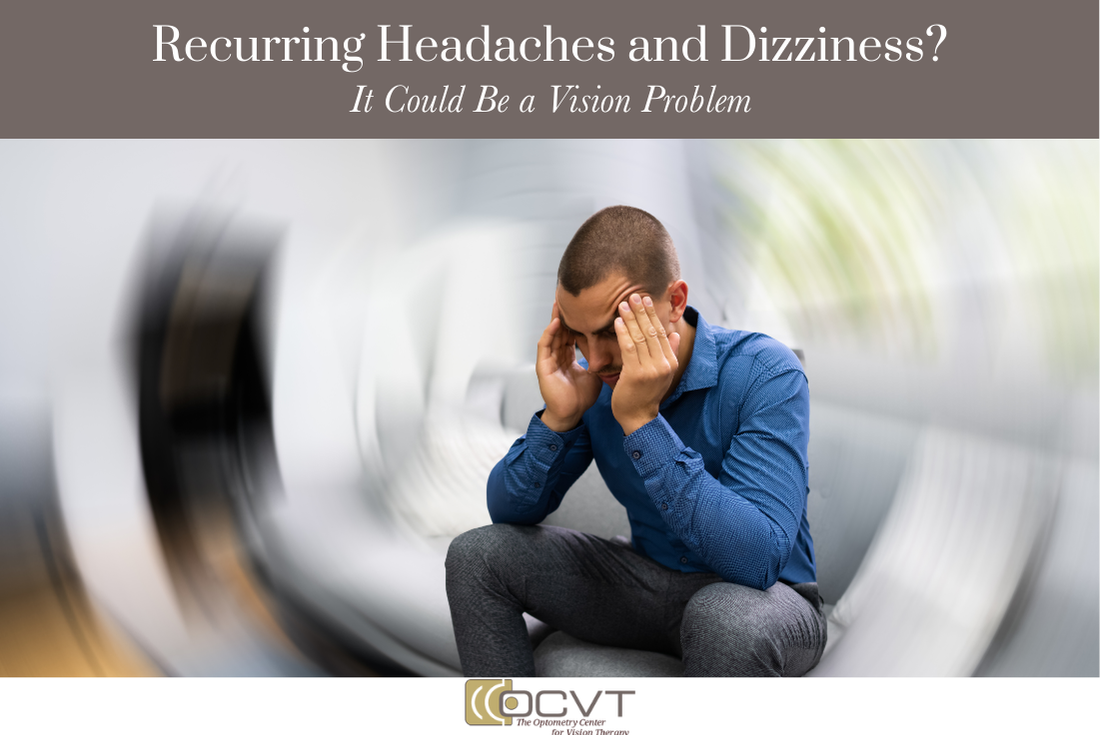Many people suffering from chronic headaches and dizziness spend years seeking relief from other treatments. But what if the root cause is actually your vision?
How the Eyes Can Trigger Headaches and Dizziness
The eyes must constantly coordinate to produce a single, clear image. When that coordination is off—even slightly—it can lead to visual strain and confusion in the brain. This overexertion can manifest in several ways:
- Tension headaches, especially near the temples or forehead
- Eye strain or a feeling of pressure behind the eyes
- Light sensitivity or photophobia
- Dizziness when moving your head or scanning your surroundings
- Balance issues and difficulty walking in visually stimulating environments like grocery stores
Vision-related dizziness and headaches are especially common in people with:
- Binocular Vision Dysfunction (BVD)
- Convergence insufficiency
- Post-concussion syndrome
- Uncorrected refractive errors
When to Suspect a Visual Cause
If your headaches and dizziness worsen during or after:
- Reading
- Looking at screens
- Driving
- Working in bright environments
- Walking through visually complex areas (like shopping malls)
…it’s time to consider your eyes as the source.
Comprehensive Eye Evaluation at OCVT
At the Optometry Center for Vision Therapy, we specialize in diagnosing visual problems that are often missed in standard eye exams. Our comprehensive functional eye exams assess:
- How your eyes track objects
- How well your eyes align and work together
- How quickly your eyes recover from visual stress
This testing allows us to identify whether your symptoms are tied to eye teaming issues or visual processing delays.
Vision Therapy: A Lasting Solution
If a visual problem is found, we develop a customized therapy plan to address it. Vision therapy uses exercises and activities to strengthen visual skills, retrain the brain-eye connection, and improve comfort during daily tasks.
Therapy can involve:
- Eye movement and tracking exercises
- Balance and coordination training
- Visual memory and processing tasks
- Use of prisms, lenses, and computer-based training
Most importantly, it targets the root of the issue—not just the symptoms.
Real Results, Real Relief
Many of our patients come to us after years of unresolved symptoms. With vision therapy, they report:
- Reduced frequency and intensity of headaches
- Better balance and coordination
- Improved ability to read, drive, and work
- A renewed sense of control over their health
If you’re experiencing headaches and dizziness with no clear answer, don’t overlook your vision. Contact OCVT for a specialized evaluation today and take the first step toward lasting relief.


